Caught in Louise's spider web
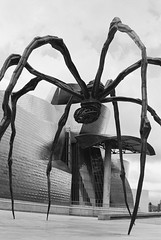
I took this photo almost a year ago. That was the first time I saw a Louise Bourgeois up close. I had never even heard of her until I attended art school in 2003. Before then I was only familiar with the "popular" artists—Picasso, Van Gogh, Warhol, Da Vinci, and Pollock—the ones whose works are compiled in a calendar you can buy for $12.99 at the local bookstore or had their biographies turned into award winning Hollywood films. I was a repressed artist and was only interested in painting, which, in my mind, was the only valid form of art. I never gave sculpture much thought. Aren’t monuments for dead heroes and conceited millionaires?
I finally discovered Bourgeois through a professor. She was a self-confessed feminist and raved endlessly about female artists. I should look her up, she suggested, if I wanted to study sculpture seriously. Since I was making a lot of disembodied figures for my works she thought I could learn a trick or two from Ms. Bourgeois. I was up to my elbows in plaster everyday, enjoying my time isolated in the studio, so, naturally, I refused to lift a finger to open a book. I was tired of reading or hearing about other people making art; I wanted to spend every minute I had making mine. "You are walking around with blinders on," my rabid professor egged on. I had to know my roots, my ancestors. There’s a long history and tradition of sculptors and, like it or not, I should study it so I could ground myself better in its world. It’s much like knowing your family history. If you acknowledge it, you could learn from your grandmother’s or uncle’s mistakes or build on what they’ve done. In the end you could take it or leave it, but you have to be aware of it first before you can decide.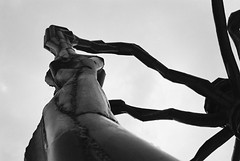 Like I said, I really didn’t want to spend my precious time reading art history. I had already wasted so much of it doing other things before deciding to go back to school for a formal training in art. I just wanted to create something. Besides, I didn’t want to subconsciously copy or integrate other people’s vision in my stuff. I’ve seen other people do it and I didn’t want to go down that road. If there was one thing I always believed in, it was that one has to tell their own truth in their own voice. Can people just leave me alone and let me do my thing?
Like I said, I really didn’t want to spend my precious time reading art history. I had already wasted so much of it doing other things before deciding to go back to school for a formal training in art. I just wanted to create something. Besides, I didn’t want to subconsciously copy or integrate other people’s vision in my stuff. I’ve seen other people do it and I didn’t want to go down that road. If there was one thing I always believed in, it was that one has to tell their own truth in their own voice. Can people just leave me alone and let me do my thing?
But, alas, my professor won in the end (she would have resorted to black mail if I hadn’t given in) and I grudgingly took out a book about Louise Bourgeois and started to read. I was totally blown away! I initially flipped through the pages and just scanned the photos. Wow, her works were fierce. As we say in Tagalog, "Ang taray!" They made my stomach churn in discomfort and drained the blood from my legs. Sculpture and installations are really powerful in the hands of a genius.
I wanted to get to know this woman and began reading her biography. I was surprised to find out that she was still alive and was ancient. I mean really ancient. She was born in Paris in 1911. She went to Sorbonne to study Mathematics (say what?!?), got married when she was in her 20’s, then moved to the States with her American husband. There were several pictures of her in the book and in each one she had a mischievous glint in her eyes and a beguiling demeanor about her. I couldn’t help but admire and envy her at the same time. Almost a century old, had survived two world wars, but this woman had more spunk than a normal 12-year-old and looked more alive than I ever did. I was a third of her age and I felt more over the hill and washed out than her. Something was definitely not right. She must know something I don’t.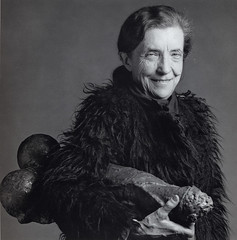 I read on and from what I’d gathered, she was not the type to produce works day in and day out. Yes, she would constantly draw and create something, but she didn’t have an exhibit one after the other. She would go on hiatus after a period of producing and exhibiting a series and would stay away from the public eye for a long time. That probably accounts for her longevity in the business. Her works have been described as sensual and erotic. She seemed to channel her unresolved conflicts and ambiguous memories from childhood into her work. Her family (her father really) owned a tapestry restoration business. She saw her mother as the protective parent and her father the authoritarian figure. At some point, he took on a lover, of all people, the family's tutor. Bastard.
I read on and from what I’d gathered, she was not the type to produce works day in and day out. Yes, she would constantly draw and create something, but she didn’t have an exhibit one after the other. She would go on hiatus after a period of producing and exhibiting a series and would stay away from the public eye for a long time. That probably accounts for her longevity in the business. Her works have been described as sensual and erotic. She seemed to channel her unresolved conflicts and ambiguous memories from childhood into her work. Her family (her father really) owned a tapestry restoration business. She saw her mother as the protective parent and her father the authoritarian figure. At some point, he took on a lover, of all people, the family's tutor. Bastard.
Her story reads like a script from a Venezuelan telenovela, which makes her works even more fascinating. Yes, I am guilty of feasting on someone else’s dirty laundry. I do get curious of other people’s lives especially when they are successful artists who can produce such an impressive portfolio. I put on my glasses, relax into a leather armchair, and go into my Jung-wannabee mode. I have probably jumped into many conclusions by reading too much into the forms and colors that she has used—and I apologize for all of them—but I still can’t help relating much of what she does to her personal life. Not that I really know her… I only get stuff from what I see in the books or what I’ve Googled. God knows how accurate they are, right?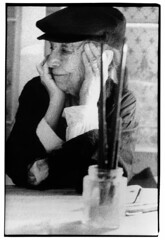
But still. She herself has mentioned the connection of her works to her relationship with her family, especially with her father. Come on, she made an installation called "Destruction of the Father." As for her giant spiders series, she has been quoted to have said that unlike her father's business of mending tapestries, a spider weaves its own web. The gigantic spider represents labor, of giving, protection and foresight. We could see it as something that nurtures, but there is always the possibility that we could get tangled in its web as if we were prey. Hello, visions of Shelob and Frodo.
Alright, alright, I personally don’t like it when people psychoanalyze me when they see my work. You can tell your story through your sculptures or novels, but it doesn’t mean they are direct translations of it. It’s never as simple as that. I guess what I am trying to say here is that I enjoy reading about Bourgeois’s life as much as I take pleasure in looking at her works not because I am a snoop, but because I would like to comprehend the way her mind works, what her creative process is, and figure out where she gets her ideas. I guess I want to know because I am still deciphering the source of mine.
Sigh. So my profesora was right—you could learn a lot from studying other artists’ stories and familiarizing yourself with their works. You just have to know that that is their way of telling it and that you have your own way of expressing yourself. You can also say that there is always room for the viewer to make their own interpretations of the artist’s work… but then, good artworks should be clear, right? I’ll leave that thought for another day.
I still have a lot to learn and I still can’t name-drop to save my life. I can never remember the names of the artworks, when they were made, in which movement the artist was part of, the –isms, and what-have-yous. And I definitely can’t imagine myself getting into long conversations and debates about the contribution of Duchamp’s "Fountain" to the post-post-POST modern contemporary multi-culturalism third millennium art. En fin. I still have a long way to go, baby, but I am learning.
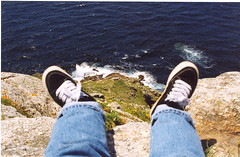

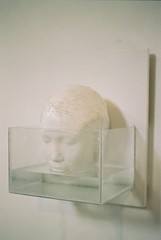




1 Comments:
"...I still have a long way to go, baby, but I am learning."
After all is said and done, LEARNING is the most important thing, my friend.
Glad to "hear" from you again.
Post a Comment
<< Home